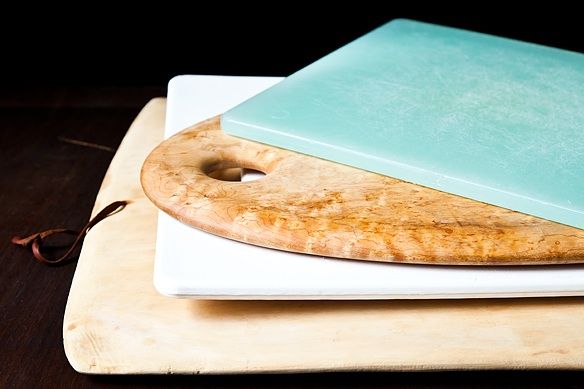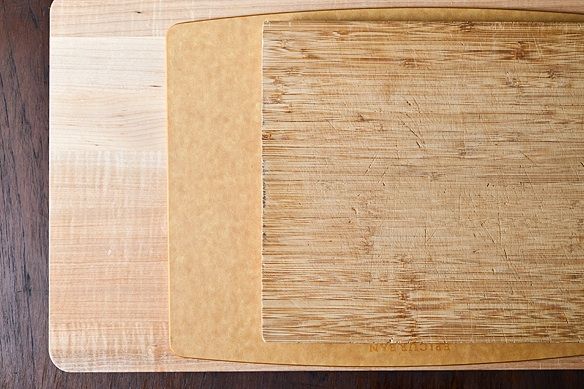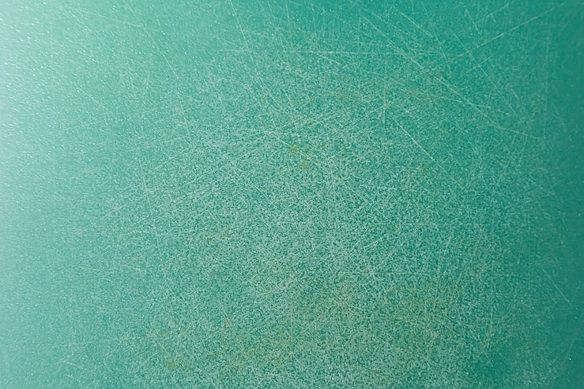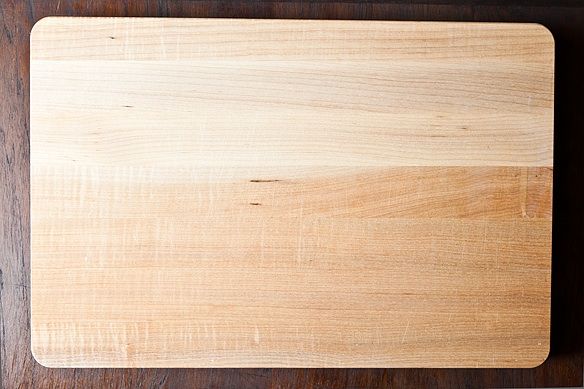Popular on Food52
Continue After Advertisement
21 Comments
smslaw
January 29, 2015
Bamboo isn't all that green, considering it is typically shipped from Asia. Maple and walnut are from the U.S.
Teak is also from Asia. It contains natural abrasives that can dull knives.
Go to a local hardwood dealer, buy a maple scrap, sand it, oil it and you've made yourself a cutting board. When it wears out, toss it in the fireplace and make another one.
Teak is also from Asia. It contains natural abrasives that can dull knives.
Go to a local hardwood dealer, buy a maple scrap, sand it, oil it and you've made yourself a cutting board. When it wears out, toss it in the fireplace and make another one.
Nitasha
January 23, 2014
Great article! My favorite cutting boards are bamboo, and I have the Schmidt Brothers Bamboo Wiki Board you mentioned. It's lasted me a really long time and looks great.
ekok
July 15, 2012
I have several cutting boards--plastic, end-grain, bamboo. Plastic is only for meats. The bamboo cutting board sort of "grabs" the knife in an unpleasant way. It's not good for fast chopping. The large end-grain block is my everyday cutting board although it's quite heavy to wash. But I have had it 5 years and use it all the time and it has not cracked. I have never even oiled it. I do use both sides equally, to ensure it doesn't warp.
f52otf
July 13, 2012
We have two of Ralph K's gorgeous boards. They work perfectly, they're easy to clean, and they're very tough. And they're so beautiful that we can use them for serving.
http://www.choppingboards.ca/gallery.php
http://www.choppingboards.ca/gallery.php
f52otf
July 13, 2012
We have two of Ralph K's gorgeous boards. They work beautifully, they're very tough, and they're so beautiful that we can use them for serving. http://www.choppingboards.ca/gallery.php
Brsboarder
July 10, 2012
I enjoy my epicurean fine enough but would love something beautiful from here: http://www.theboardsmith.com/
Allysooon
July 10, 2012
I spent years admiring beautiful wood cutting boards during and after college but never had the ash or space for one. I recently settled on an end-grain acacia board and am in love. I have a set of cutting mats which I use on top when I'm worried about cross-contamination. They're color coded with an image of the type of food they're meant for (i.e. carrot for veggies) and they're easier to wash than the big board (lazy!)
Kitchen B.
July 9, 2012
Hmm, learnt something about cleaning boards - salt and lime/lemon. Thanks Brette and sorry I have nothing to offer by way of what to choose! Get 'em all :-)
PickleMuseum
July 9, 2012
I'm definitely a fan of wood cuttting boards. Bamboo is too hard on knives. But you're confusing end-grain and edge-grain. Boards made of small vertical pieces are end-grain.
China M.
July 9, 2012
I have become a big fan of the Epicurean boards made of pressed wood fiber -- a lot less pretty than traditional wood boards, but they require much less care and attention. I don't think you need to worry much about segregating meat, but I've found that it's really helpful to have one cutting board that is allium (and other strongly-flavored food) free, so you never have to worry about cutting up a peach and having it taste like onion.
Burnt O.
July 9, 2012
I have a giant, maple board I got at IKEA ages ago. It has a lip on each end to keep it on the counter, and the reverse side is a carving board with deep channels to catch all the juices. It's permanently on my counter and I just wipe everything directly into the sink. Once a week or so, I take a lemon, and a quarter cup of kosher salt and make a paste out of the salt and lemon juice, and scrub it down with the cut side of the lemon and rinse it in super hot water. Every other month or so, I wipe it down with a commercial cutting board oil. I only use it for veggies. I have two colored jelly boards that I use for meats, and those go directly into the dishwasher on a sanitation cycle.
Brette W.
July 9, 2012
Sounds like a great system! Definitely going to look into that IKEA maple board -- it sounds so versatile.
Panfusine
July 9, 2012
Thanks for this extremely informative series.
My personal choice of cutting boards..Bamboo.. and an edge grain board for taking food pics..
I like to scrub my boards with a tablespoon of sea salt and used up lime , it seems get rid of any stains quite effectively. (My kitchen being totally meatless, I don't have to segregate boards)
Brette W.
July 9, 2012
So glad you're enjoying it, Panfusine! Edge grain boards really are perfect for food pictures. So good to keep in mind.






See what other Food52 readers are saying.